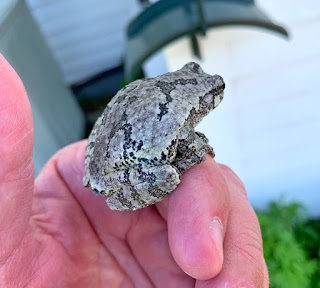Ruby James and saxophonist Stephen "Coopy" Cooper formed this Midwest phenomenon in Door County with a chance meet-up that somehow involved the Holiday Music Motel in Sturgeon Bay. You know, that place born of the Steel Bridge Songfest where musicians come and stay for a long weekend to compose and record music.
I’ve seen this group perform their brass-infused brand of soul and funk several times on the peninsula. Sure, you may have to drive an hour (maybe) but they are worth the trip.
You can read the entire story behind the story in this piece by Matt Mueller and published in OnMilwaukee about the same time as I became aware of the group. And if you like their music like I do follow them on Face Book and the band's website here to be sure you don't miss a performance coming close to you.
In the meantime there is She Won't Go - WIFEE and the HUZzBAND...

































